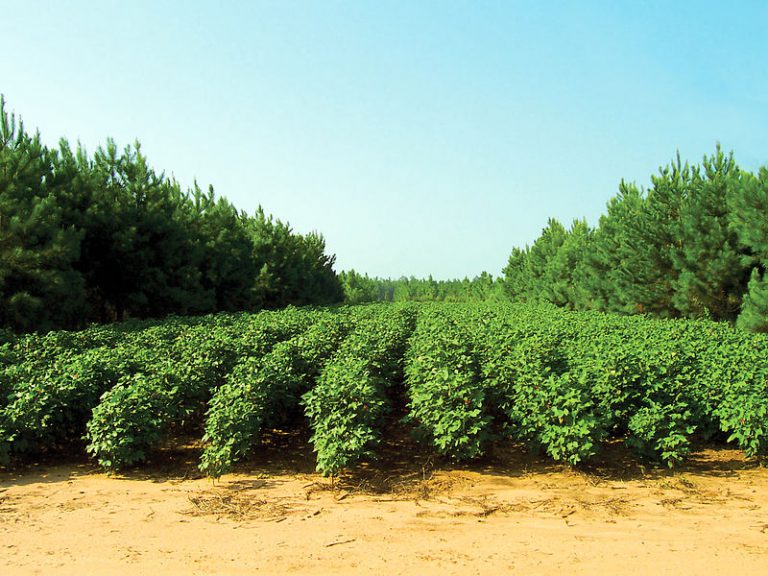Written by: Agnes Bondesson, communication officer at SLU Global, Swedish University of Agricultural Sceinces

Photo: National Agroforestry Center/Wikimedia commons
22nd of April is every year dedicated to our beloved earth, so called Earth day. SLU has research projects in a wide range of areas and today it is time to give attention to one of them, agroforestry. This is a method where trees are planted among crops and animals and it is seen as a sustainable nature-based solution which can contribute to several of UN’s Sustainable Development Goals.
Agroforestry provides various ecosystem services which are beneficial both locally and globally in the fight against climate change. This way of farming can limit the amount of greenhouse gases in the atmosphere by binding carbon and nitrogen in vegetation and soil. At the same time, the cultivation system contributes to positive effects in the local area, as trees shade, bind soil and increase resistance to pests, drought and floods, as well as providing access to firewood and a variety of nutritious food. It creates a favourable microclimate around the trees for a variety of flora and fauna.
SLU has several research projects running about agroforestry, many in collaboration with other universities and organisations around the world. SLU Global asked Ulrik Ilstedt, researcher at SLU, a few quick questions about agroforestry.
1. How does SLU work with research in agroforestry?
There are many people at SLU who work with different aspects of agroforestry in low-income countries, both from economic, social and environmental aspects. I myself have worked mostly with how agroforestry can contribute to carbon binding and how it also affects the water balance. Especially the water balance has been a much debated issue where hydrologists have previously thought that all trees – in forest or agricultural land – have a negative impact on water supply as trees use more water than grass and crops.
For tree planting organisations and the general public it has been difficult to realise that forests are bad for water supply. Many people think of the forest as a sponge that sucks in water. Instead, we have developed a new theory in which we believe that indeed the trees’ soil-improving ability can contribute to more water entering the soil and groundwater but up to a certain limit. If the trees grow too fast and too dense, their water consumption will take over and there will be water loss compared to pure agricultural land.
2. What are the benefits in a global sustainability perspective?
You can get a productive and sustainable cultivation system that can at the same time maintain many environmental values, such as biodiversity, water regulation and carbon storage. Because the trees contribute to soil improvement, farmers who are poor can cope with less or no commercial fertilizer. There are also advantages to being able to get different alternative products from the same fields and to spread risks.
3. What projects are SLU currently running?
One of the larger collaborative projects led by one of my colleagues, Gert Nyberg, where several researchers from SLU work together with other universities, is about studying different aspects of an area in Kenya. The organisation Vi-agroforestry previously used the area to influence how the pasture was organised. Through a better organisation of the pasture with fences, grass and trees could come back into the area and the pasture became more productive. This collaboration project is now being developed in other areas with both Swedish and international partners.
I myself would be particularly interested in continuing with the water issue. We now know that it is possible to grow trees and at the same time increase the water supply. Can we improve the groundwater supply further through maintenance with for example what kind of trees we use, if we prune them and how the trees are spread.
4. If you mention some positive effects with agroforestry, what would it be?
Agroforestry can contribute to many of the Sustainable Development Goals, for example to combat poverty and hunger (# 1 and # 2), better access to water (# 6), to help us combat and manage climate change better (# 13) and to contribute to higher biodiversity (#15). Agroforestry can also contribute to give women more time and opportunity to develop and take control of resources.
More information:
News page at SLU website
Debate article at Aktuell Hållbarhet (Swedish)
